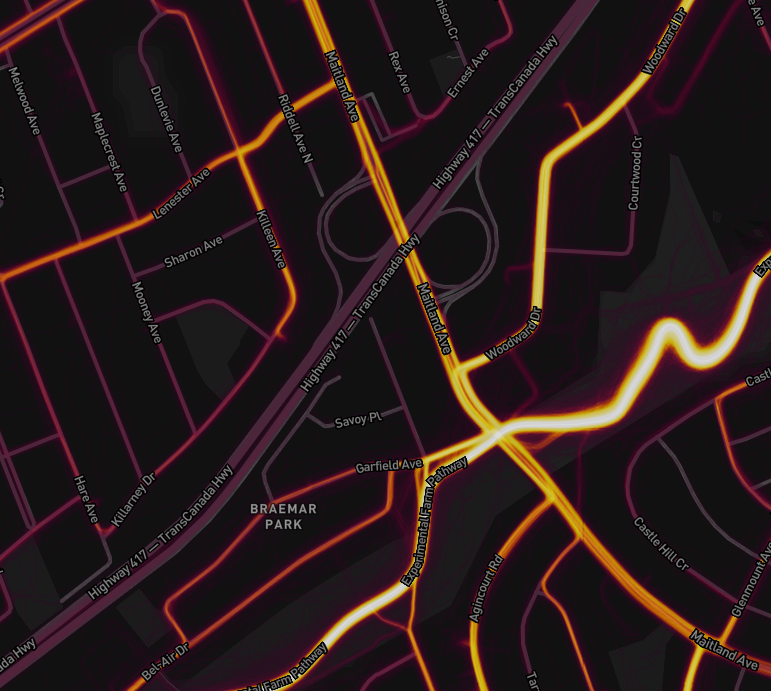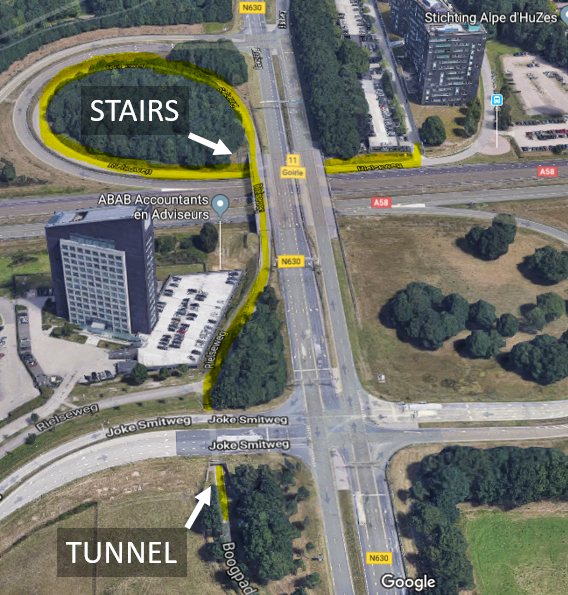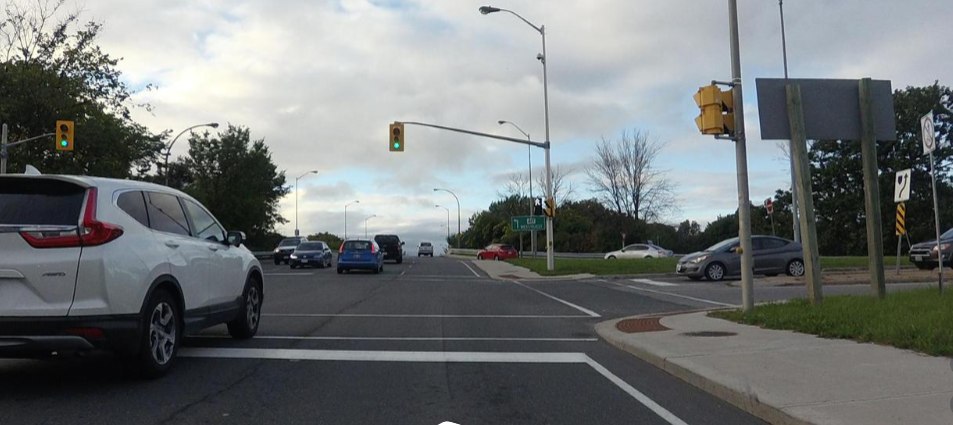Attention Ottawa: we have a problem. We’ve reached the point where we actually have lots of bike lanes (and cycle tracks, and paths). We have many people cycling. That’s all great news. But, we also have a lot of people who drive, and they use highways.
So when one of our many cycling (and walking) routes crosses a highway ramp, Ottawa is being faced with a difficult situation that puts the lives of vulnerable road users at risk.
We’re in an awkward stage: much of the easy stuff is already built, but now it’s time to really push onwards to become a city that makes walking and cycling feel safe and relaxing for the entire trip. That means eliminating the danger zones around highway ramps. Fortunately, other cities have led the way, giving Ottawa a successful example to follow.
New 417 overpass, new Ottawa bicycling opportunities
Maitland Avenue over the 417 is going to be re-built. When LRT phase II comes through the area, the 417 will naturally need to be widened. Please don’t ask us to explain that logic. But, this comes with opportunity to improve the cycling facilities on this very busy road. Maitland today is two lanes in each direction, plus turn lanes and merge lanes. It could hardly be a more hostile environment for cycling. Despite this, it remains a well-used route, since it connects neighbourhoods and is a way to reach the popular Experimental Farm Pathway.

A smart solution that works for everyone
There’s no need to have all the high-speed motorized traffic that is entering and exiting the 417 cross paths with cyclists and pedestrians. We can have the highway, and we can also have total safety for vulnerable road users. The key will be to make a decision now to take advantage of the upcoming re-build. Grade-separated paths aren’t new to Ottawa; we already have some examples, such as near the south end of the Portage bridge, or the underpass of Nicholas at the University of Ottawa. They work well for the flow of both motorized and non-motorized traffic, and most importantly, for safety.

This example from the Netherlands demonstrates how bicyclists can be given a safe place, even near a major highway. Stairs are thoughtfully provided so that pedestrians can skip the long walk around the loop. (Image by Google)
A tunnel or bypass that allows vulnerable road users to completely avoid motorized traffic will of course cost more than some paint and signage at the conflict points. But considering the relatively small cost of providing an off-road path vs. the overall cost of highway widening and LRT building, and furthermore factoring in the danger to their lives, we believe that people who walk and bike deserve nothing less than physical protection at 417 junctions.
If you agree that it’s time for Ottawa to build highway overpasses/ underpasses and slip lanes in a way that allows all road users to travel safely, a good place to start would be to provide some feedback on the Maitland Avenue overpass project. Even if this one isn’t in your own neighbourhood, your comments could help to raise the standard for all highway junctions as they are rebuilt, which will be happening all over the city in the coming years.
Comments to the online consultation will be accepted until March 15, 2018.

